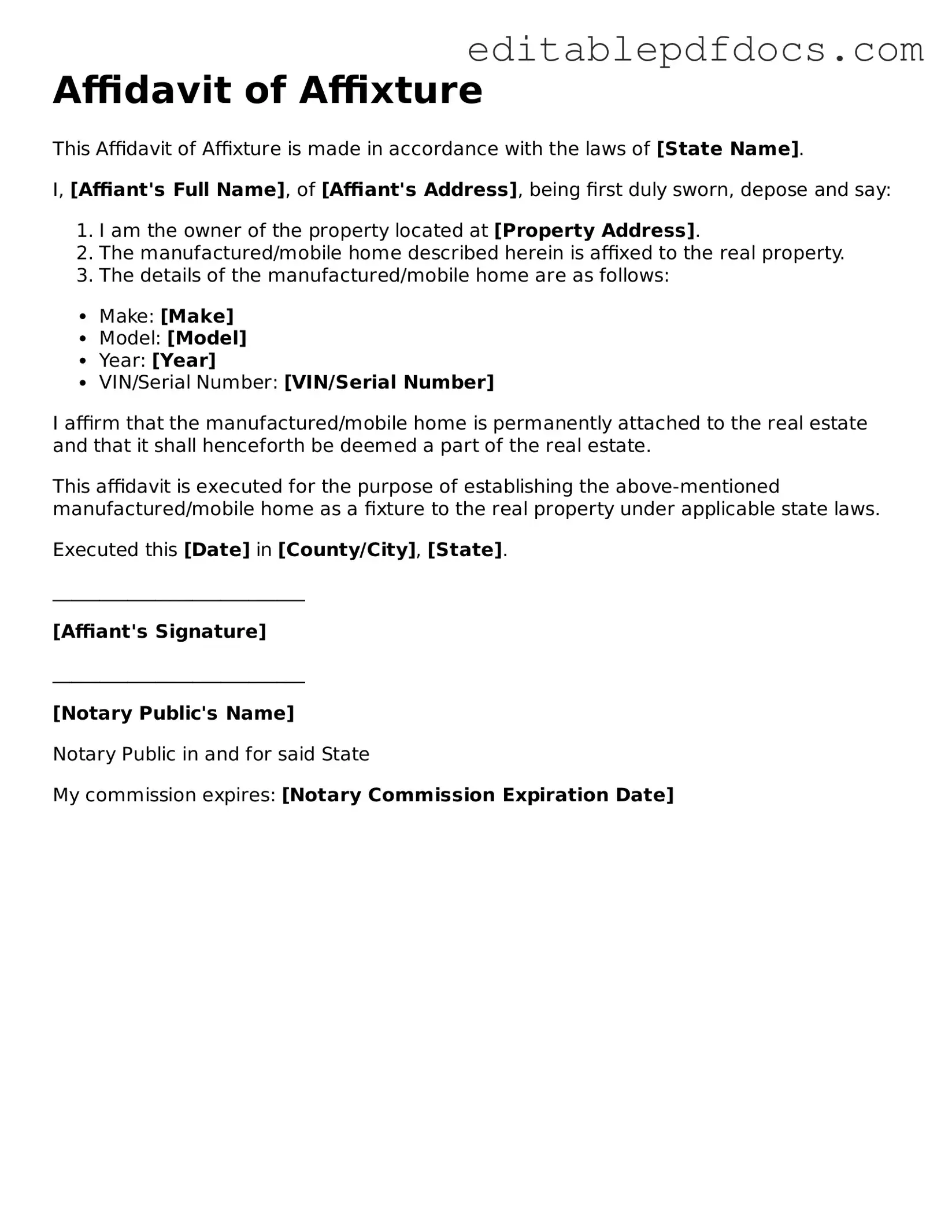Filling out the Affidavit of Affixture form can be a straightforward process, but many individuals make common mistakes that can lead to complications. One frequent error is failing to provide accurate property information. This includes the legal description of the property, which must match the records in the county office. If this information is incorrect, it can create issues with property ownership and title transfer.
Another mistake often seen is neglecting to sign the form in the appropriate places. An unsigned affidavit is not valid. It is essential to ensure that all required signatures are present, including those of witnesses if applicable. Missing a signature can delay the processing of the affidavit and may require resubmission.
Some individuals also overlook the importance of providing supporting documentation. The Affidavit of Affixture may require additional paperwork, such as proof of ownership or prior title documents. Failing to include these documents can result in rejection of the affidavit.
Many people do not pay attention to the notary requirements. An affidavit must be notarized to be considered valid. If the notarization is incomplete or the notary's information is missing, the document may not hold up in legal situations.
Another common issue is the failure to accurately describe the manufactured home. The form requires specific details about the home, including its make, model, and serial number. Omitting or misreporting this information can lead to confusion regarding the property.
People often confuse the Affidavit of Affixture with other legal documents. It is crucial to understand that this affidavit specifically pertains to the affixture of a manufactured home to real property. Mixing it up with other forms can lead to submitting the wrong paperwork.
In some cases, individuals do not check for consistency between the affidavit and other documents. Any discrepancies can raise red flags during processing. It is vital that all information aligns across documents to avoid complications.
Another mistake is waiting too long to file the affidavit after affixing the manufactured home. Many jurisdictions have specific timeframes within which the affidavit must be submitted. Delaying this process can result in penalties or difficulties in establishing ownership.
Lastly, people often underestimate the importance of reviewing the completed form before submission. A thorough review can catch errors or omissions that may otherwise go unnoticed. Taking the time to double-check the form can save significant time and hassle down the line.
